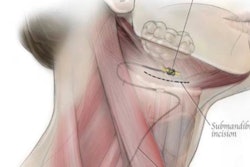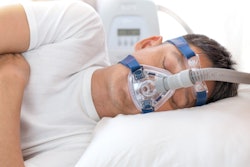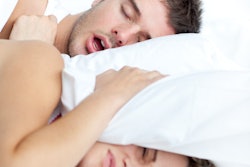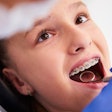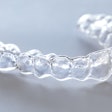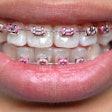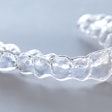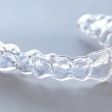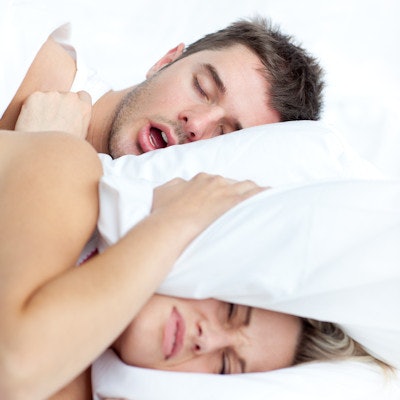
Patients with mild to moderate obstructive sleep apnea (OSA) saw greater improvement in their condition when they wore mouthguards set at a mandibular advancement of 50%, according to a study published recently in Clinical and Experimental Dental Research.
None of the patients experienced side effects, including temporomandibular pain, while wearing the guards at night for a few months, the authors wrote. The apnea-hypopnea index scores and apnea index scores improved more in patients who wore oral appliances with a 50% mandibular advancement than they did wearing guards with a 75% mandibular advancement.
"For patients with mild to moderate OSA, 50% mandibular advancement is recommended as the initial therapeutic mandibular position," wrote the authors, led by Dr. Eri Makihara of Kyushu Dental University in Japan (Clin Exp Dent Res, August 23, 2022).
Using an oral appliance can improve OSA by pulling the jaw forward during sleep to alleviate upper airway obstruction. Though an appliance set at a large mandibular advancement reduces the number of apnea and hypopnea events, long-term use may cause side effects, including pain and toothache.
To evaluate the efficacy of different mandibular positions for OSA and determine the optimal therapeutic mandibular position, 32 patients with mild to moderate OSA were given boil-and-bite mouthguards to wear at least five days per week and once every four hours. Of the participants, 17 were selected randomly to wear appliances set at 50% mandibular advancement, and the remaining 15 patients were chosen to wear guards set at 75% mandibular advancement.
After three to four months from the start of treatment, their conditions were assessed and compared to what they were before wearing the appliances. Treatment success was defined by an apnea-hypopnea index of less than 10 and an apnea index of less than 5, according to the study.
In the 50% mandibular advancement group, 11 of the patients (64.7%) experienced treatment success, with apnea-hypopnea index scores of less than 10. In the 75% mandibular advancement group, eight of the patients (53.3%) experienced treatment success.
In terms of the apnea index, 12 patients (80%) with the 50% mandibular advancement appliances experienced treatment success, with scores of less than 5. In the 75% mandibular advancement group, 10 patients (76.9%) experienced treatment success, the authors wrote.
Furthermore, none of the patients lost posterior contact or reported temporomandibular joint or masticatory muscle pain while participating in the study. The study had limitations, including the small sample size, the authors wrote.
"OA (oral appliance) treatment for patients with mild to moderate OSA should utilize a 50% mandibular advancement as the initial therapeutic mandibular position," Makihara and colleagues wrote.




